The smokestack of Baltimore’s trash incinerator towers over Interstate 95 like a giant cigarette. Its nine-story furnaces annihilate garbage to generate electricity, all while coughing out air pollution.
If anyone should hate this machine, it’s Christopher Dipnarine.
A self-described environmentalist, Dipnarine runs what he calls Maryland’s largest, free residential composting program. His nonprofit 4MyCiTy recycles food waste, diverting tons of spoiled or discarded food each day that might otherwise have fed the incinerator.
Yet he might be the incinerator’s biggest defender. He thinks environmentalists who want it shut down don’t have a clue.
The Baltimore Banner thanks its sponsors. Become one.
“People here in Baltimore, I think they’ve been brainwashed,” he said.
Elected leaders have been promising for years to wean Baltimore off its trash incinerator, the city’s largest single source of greenhouse gas emissions. But, according to Dipnarine, all it takes to prove Baltimore is far from ready to cut off the incinerator is a look inside a room there known as the pit. He saw it during a visit last year.
The five-story vault reeks with a thousand rotting scents. Crows wing about hunting for scraps.
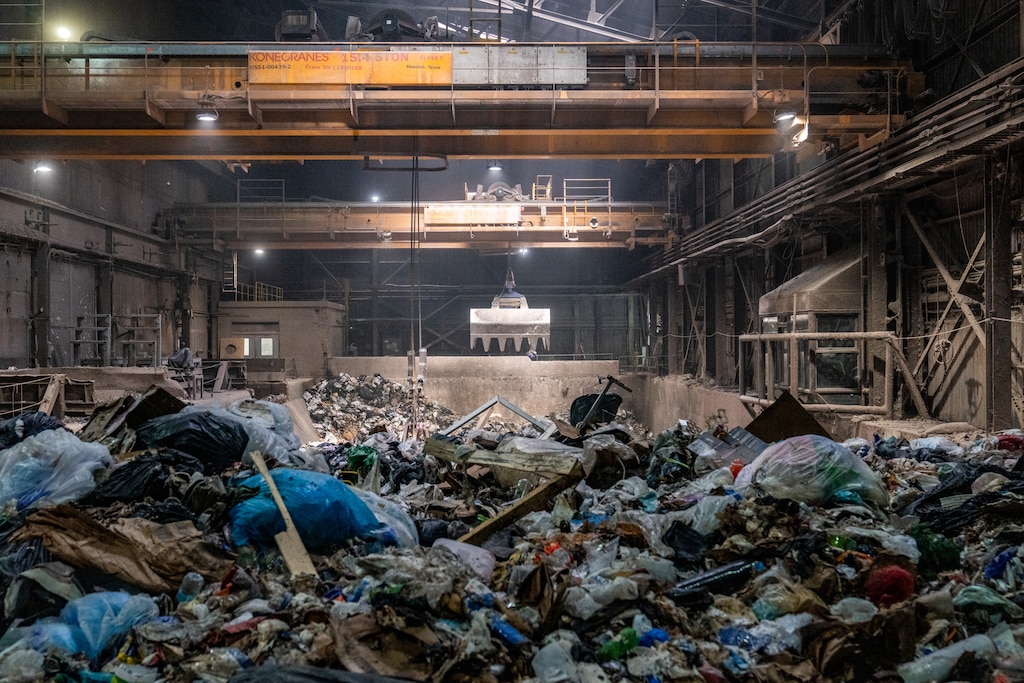
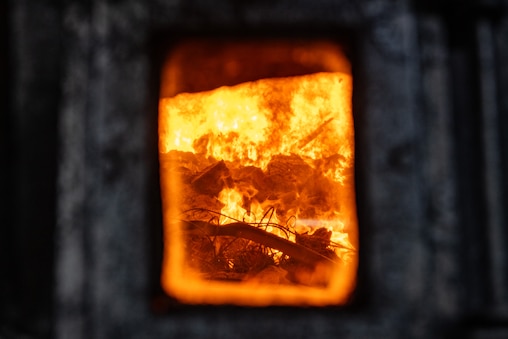

“Most people that talk to me, I say, ‘Have you seen it?,’ ” Dipnarine said. “‘Have you been there? Did you see our waste problem?’”
Close to a third of the waste picked up by Baltimore’s Department of Public Works ends up there. Trash delivered by city haulers accounted for nearly 30% of the waste burned at the WIN Waste facility last year, according to company figures. Baltimore County also depends on it.
The Baltimore Banner thanks its sponsors. Become one.
Giant claws lift loads of trash from the pit into the facility’s three kilns, where garbage burns to generate energy for the electrical grid. On cold winter days, steam created during this process heats downtown buildings.
If Baltimore produces all this trash, operators at WIN Waste argue, why not use it?
But burning waste for energy produces pollution — climate-warming greenhouse gas as well as particulates, sulfur dioxide, nitrous oxide and lead — which has made environmentalists question why the state subsidizes the incinerator.
It received millions in the last decade for producing so-called “renewable” energy. Now top lawmakers in Annapolis say it’s time to stop treating burning garbage like wind turbines or solar panels.
Dipnarine is part of a coalition of nonprofit leaders and clergy coming to WIN Waste’s defense. At a news conference earlier this month, they shared concerns about what cutting the funding could mean for WIN Waste’s local philanthropy. (The company said it gives around $1 million each year to Baltimore community groups.)
The Baltimore Banner thanks its sponsors. Become one.
They’re also worried about trash.
Without WIN Waste, Dipnarine argues, Baltimore would need to truck garbage to landfills out of state — at great cost to taxpayers and the environment. Landfills are notorious emitters of methane gas, which is far more potent than carbon dioxide at warming the atmosphere.
Dipnarine’s 4MyCiTy spares food waste from the incinerator using machines that convert organic matter into soil in just 24 hours. Typical composting takes weeks or months. The nonprofit 4MyCiTy picks up food waste from more than 7,000 participating households, using bags with the WIN Waste logo, paid for by the company.
Apart from these bags, Dipnarine said he doesn’t take funding from WIN Waste. Saying he’s a successful cryptocurrency investor, Dipnarine doesn’t receive a salary from his nonprofit.
“That’s why I can talk so much smack,” he said.
The Baltimore Banner thanks its sponsors. Become one.
Dipnarine considers himself a composter, but his method has critics.
Marvin Hayes, a fervent incinerator opponent who also runs the Baltimore Compost Collective, said it’s not possible to create compost in a day. If it was, everybody would do it.
“I’m a soil snob,” said Hayes, who called Dipnarine’s method “greenwashing at the highest level.”
For now, 4MyCiTy gives its product to a Western Maryland pig farmer.
Quality aside, Dipnarine argued that his approach diverts millions of pounds of food scraps each year that would otherwise drive emissions at the incinerator.
The Baltimore Banner thanks its sponsors. Become one.
Here, he and incinerator opponents may have common ground.
Baltimore is contracted with WIN Waste until 2031, and advocates argue that City Hall has failed to make investments in things like recycling and composting needed to stop burning trash. The consequences, advocates argued in a federal civil rights complaint last year, fall on the poor and largely non-white communities living near the incinerator.
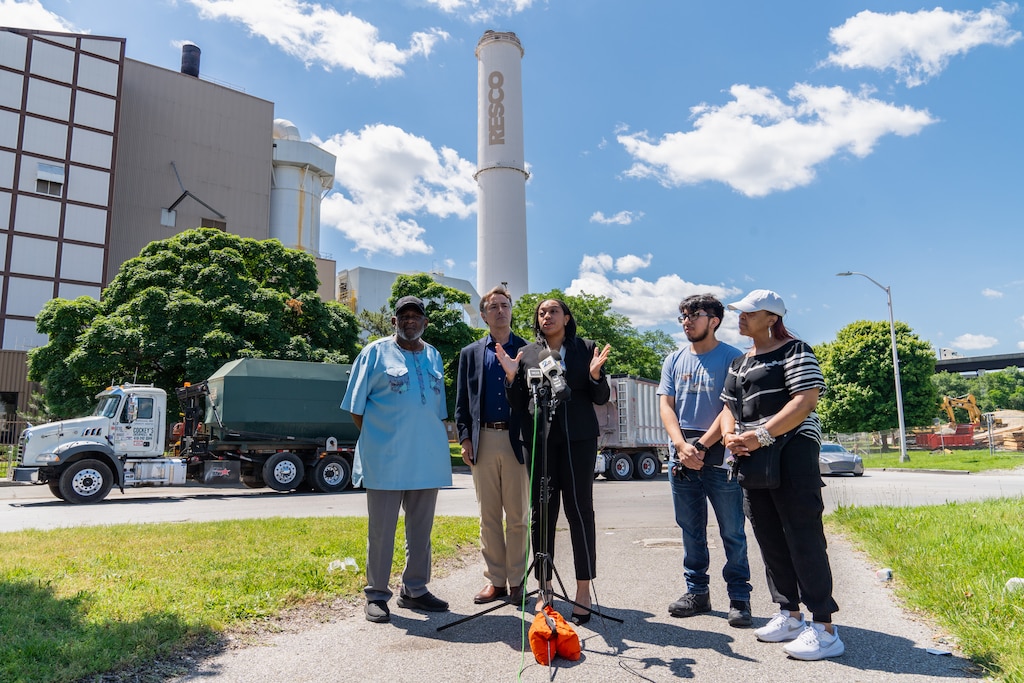
Carlos Sanchez, a youth outreach specialist with the South Baltimore Community Land Trust, grew up in one of those communities, Lakeland, and suffered from childhood asthma. Rates of childhood asthma in Baltimore are double national levels, and others Sanchez knows in the area fight respiratory conditions or even lung cancer — problems they believe stem from the incinerator and other industrial neighbors.
“You can smell it in the air, what’s going on,” Sanchez said.
WIN Waste argues that the health impacts of its emissions have been exaggerated — a 2019 study by a Johns Hopkins epidemiologist, commissioned by the company, found its facility had “negligible” impact on local air quality — and emphasizes the $45 million it has invested in upgraded pollution controls and other upgrades, a requirement of its 10-year deal with the city.
The Baltimore Banner thanks its sponsors. Become one.
Releases of health-hazardous air pollutants, meanwhile, are well below federal and state limits, and also meet the city’s even stricter requirements.
Elsewhere, incinerators don’t get the bad rap they do here, WIN Waste spokeswoman Mary Urban said. Sweden, for instance, sends less than 1% of its waste to landfills thanks partly to reliance on waste-to-energy incinerators. In Copenhagen, Denmark, a giant incinerator doubles as a public ski slope.
Still, incinerators in such places are part of larger systems that help communities reduce waste while diverting toward environmentally friendly outlets like recycling and composting, said Hunter College professor Lily Baum Pollans.
“Incineration may have a place in a well-balanced system,” said Pollans, author of “Resisting Garbage: The Politics of Waste Management in American Cities.” “But we don’t have that.”
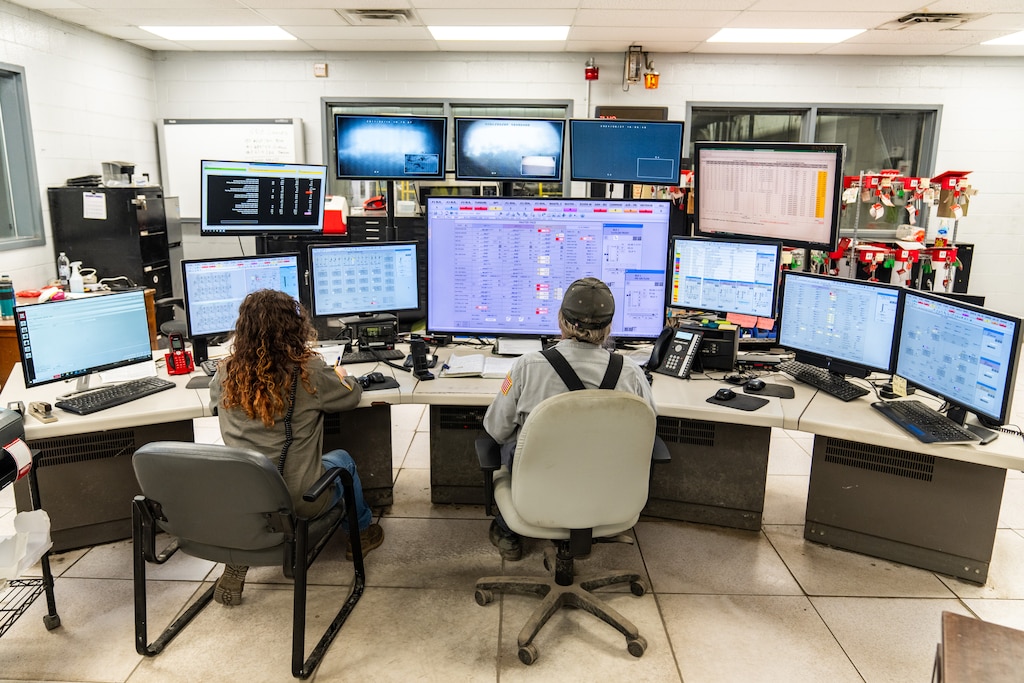
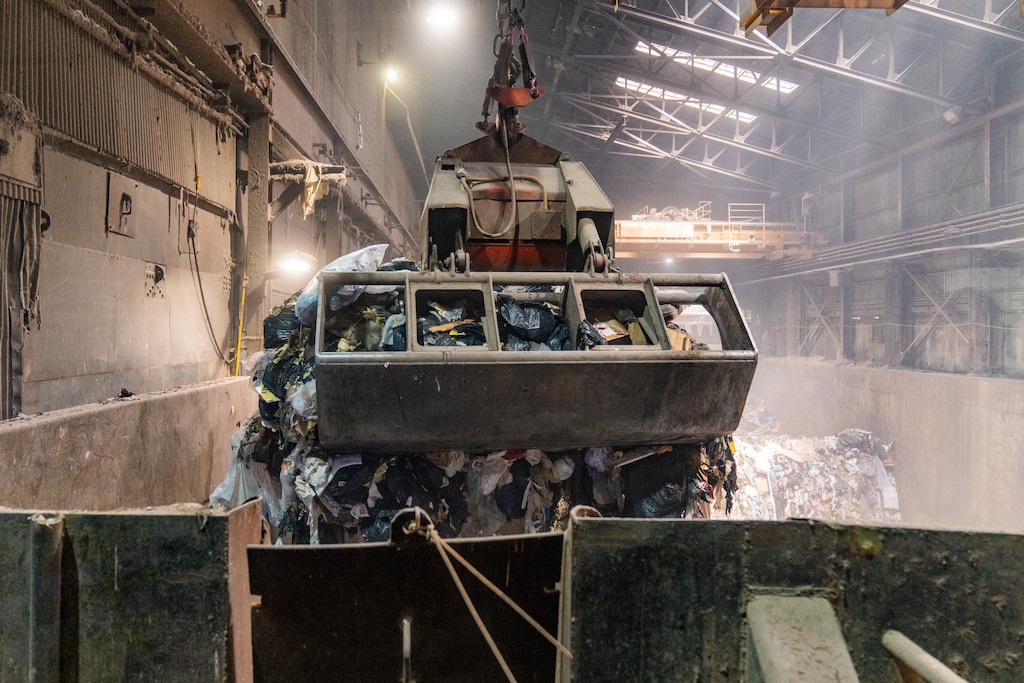
Meanwhile, much of the garbage that piles up at WIN Waste includes detritus that could be recycled or composted like plastic bottles, mattresses and yard waste. Nearly all of the trash picked up by the city ends up at WIN Waste or the landfill, even though the city has a goal of eventually handling 90% in more environmentally friendly ways.
Others doubt that Baltimore can kick its addiction to incineration anytime soon.
Marco Castaldi, a chemical engineering professor at the City University of New York, said the huge reductions and diversions Baltimore is targeting don’t look realistic. He sees incineration as part of the solution to city trash problems.
Comprehensive reform requires major investments, not to mention shifts in community behavior, he said. Even then, recycling doesn’t always go as planned: A study Castaldi conducted alongside New York City’s sanitation department found that only around half of the plastics diverted were actually recycled.
The rest, he assumes, ended up in a landfill.
Dipnarine occasionally spars with environmental activists on social media, and, as he walked through the incinerator, he fired off posts about Baltimore’s trash headache.
One showed a 2,500-degree boiler reducing garbage into ash. Another showed one of the pit’s giant claws moving a fistful of trash as big as a truckload.
“Understanding how much waste we actually produce,” Dipnarine posted, “is only the beginning.”
This article has been updated to note the methane emissions of landfills and that the incinerator meets the city’s strict emissions standards.





Comments
Welcome to The Banner's subscriber-only commenting community. Please review our community guidelines.